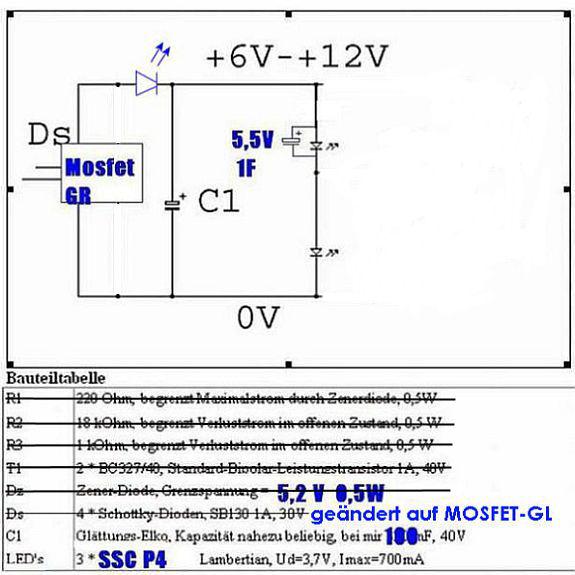I can only type for my light, dunno what "Martins circutis" are
(but imho the very basic designs are around for quite some time ...)
For me, I 1st look if the dyamos have some kind of Voltage restriction (usually Z-diodes):
without any load, the AC-meter hooked to the dynamo, speed it up.
When it goes up to ~7.5 volts and stays there, the Z-diodes are present. And if the voltage goes up at higher value, there is nothing (something we want here).
With the Lux V it makes no real deal, that runs with the 7.5 V. With the triple-cree the Z-Diodes have to be killed.
Now one has a front light that runs with 7.5 V, or with some 11 Volts.
Hook the wires for the tail light in parallel to the dynamo and the 5 V Voltage regulator ensures the red led (2 parallel strings of 2 in series) get their voltage, no matter what Voltage the front system is running on.
Sure the regulator burns excess voltage into heat, but with that low current no real deal.
Also the led version runs on under 100 mA, while any normal tail light steals much more from the front,
AND - when the tail were in series with the front light not to "steal" power from it - it were brutally too bright AND the light would need the bike to go relatively quick to light up.
So, I have a very "easy to make" and small solution of front and tail, both hooked to the 2 exits of the dynamos in parallel. No hassling with more wires from tail to back.
PS: my system (the triple-cree) works with walking speed already, with a very simple and small MOSFET-Rectifier solution (coming from juergen.h at
www.metb-news.de)
there surely are much more sophisticated "voltage doubler" or "switching" circuits.
I also remember someone in here measured a few that were better than the MOSFET.
From all I tested the Mosfet gave the most light at low speed. This and its small physical size is why I choose this one.








